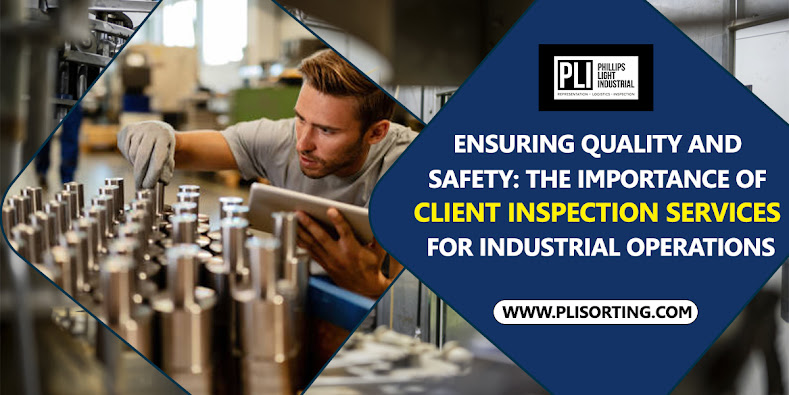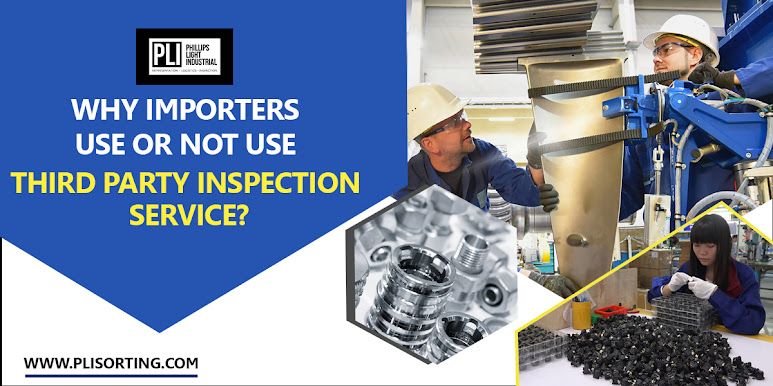How to Conduct a Successful Quality Control Inspection
Introduction
In the dynamic landscape of business, ensuring the quality of products and services is paramount to gaining a competitive edge. Successful organizations recognize the importance of a quality control inspection in maintaining high standards and meeting customer expectations. In this comprehensive guide, we delve into the intricacies of conducting a successful quality control inspection, shedding light on the significance and benefits of professional quality control inspection services.
The Foundation: Understanding Quality Control Inspection
Quality control inspection is the bedrock of delivering excellence. It involves a systematic process to scrutinize and evaluate products or services, identifying any discrepancies and ensuring adherence to predefined standards. This meticulous approach safeguards against defects, reinforcing a company's commitment to customer satisfaction.
Key Components of Quality Control Inspection
Thorough Examination: A successful inspection begins with a meticulous examination of every aspect of the product or service. From raw materials to final output, each step undergoes scrutiny to guarantee quality.
Standard Compliance: Ensuring that products meet industry standards and regulatory requirements is non-negotiable. Quality control inspection verifies conformity, mitigating risks and maintaining a sterling reputation.
Documentation: Accurate record-keeping is essential. Quality control inspection services meticulously document every detail, providing a comprehensive overview for future reference and improvement.
The Process: Executing a Flawless Quality Control Inspection
Pre-Inspection Preparation
Before initiating the inspection, meticulous planning sets the stage for success. This phase involves:
Defining Inspection Criteria: Establishing clear criteria aligns expectations and ensures a focused inspection process.
Team Training: A well-trained inspection team is essential. Investing in ongoing training enhances their ability to identify nuances and potential issues.
On-site Inspection Procedures
The actual inspection involves a series of meticulous steps:
Sample Collection: Randomized sample collection is crucial for unbiased evaluations. It represents the entire batch, ensuring a comprehensive assessment.
Visual Examination: A visual inspection identifies visible defects, ensuring the product meets aesthetic standards and customer expectations.
Functional Testing: Beyond appearances, functional tests guarantee that products perform as intended. This step is especially crucial for technical or complex items.
Statistical Analysis: Employing statistical tools enhances the reliability of the inspection. This data-driven approach identifies patterns and trends, aiding in predictive quality assurance.
Post-Inspection Analysis and Reporting
Once the inspection concludes, a thorough analysis and comprehensive reporting follow:
Defect Identification: Pinpointing defects allows for targeted corrective action, preventing recurrence in future production cycles.
Root Cause Analysis: Understanding the underlying causes of defects is paramount. This informs strategic decisions to improve processes and prevent future issues.
Actionable Recommendations: Quality control inspection services should not only identify problems but also offer actionable recommendations for improvement.
The Significance of Professional Quality Control Inspection Services
While understanding the basics of quality control inspection is crucial, partnering with professional services elevates the process to new heights.
Expertise and Experience
Professional inspection services bring a wealth of expertise and experience to the table. Their seasoned inspectors are adept at identifying even the subtlest issues, ensuring a meticulous examination.
Cutting-edge Technology
Utilizing advanced technology, these services employ tools such as AI, machine learning, and data analytics, enhancing the accuracy and efficiency of the inspection process.
Time and Cost Efficiency
Outsourcing quality control inspection services can significantly reduce time and costs. Professional inspectors streamline processes, allowing businesses to focus on core activities while ensuring quality.
Why Choose Us
Plisorting.com is a shining example of quality control inspection services in the industry. What distinguishes us is our dedication to providing unmatched quality assurance.
Experienced Team: Our team comprises seasoned professionals with a wealth of experience in diverse industries, ensuring a comprehensive understanding of varying inspection needs.
Cutting-edge Technology: We leverage the latest technological advancements to guarantee precision and efficiency in our inspection processes.
Customized Solutions: Recognizing that every business is unique, our services are tailored to meet specific requirements, providing bespoke solutions for optimal results.
Conclusion
In the competitive business landscape, the success of your endeavors hinges on delivering top-notch products and services. Quality control inspections are the linchpin of this process, and choosing the right partner is non-negotiable.
Make the strategic choice for success – choose Plisorting.com for unrivaled quality control inspection services. Our commitment to excellence, cutting-edge technology, and industry-specific expertise set us apart. Elevate your business to new heights with a partner dedicated to ensuring quality at every step.



Comments
Post a Comment